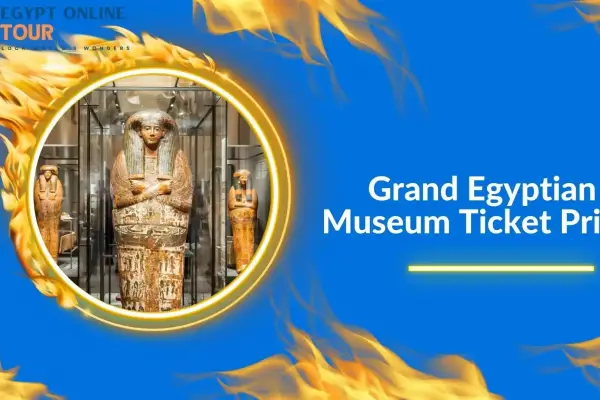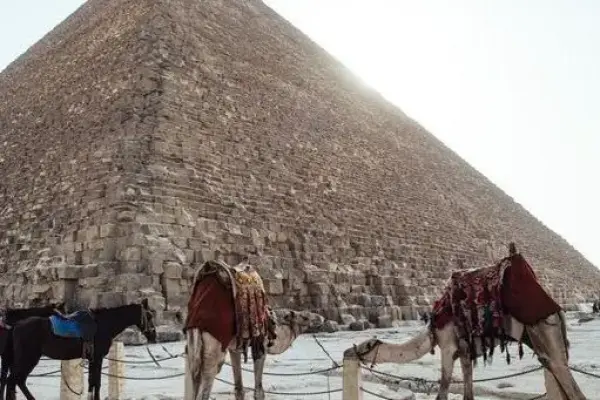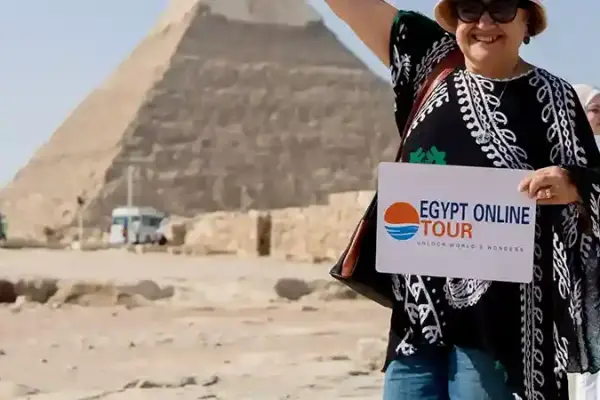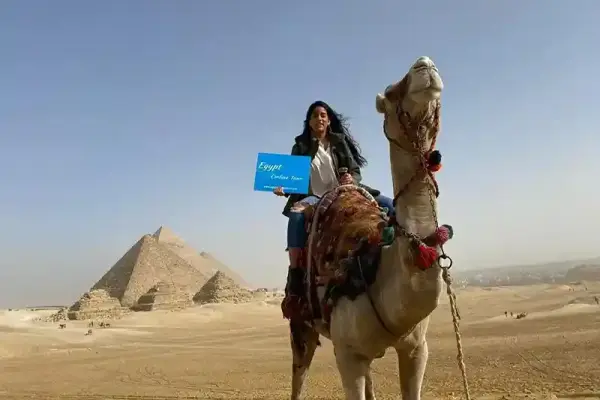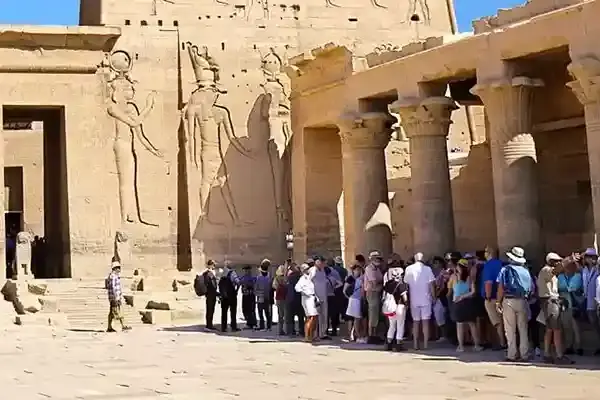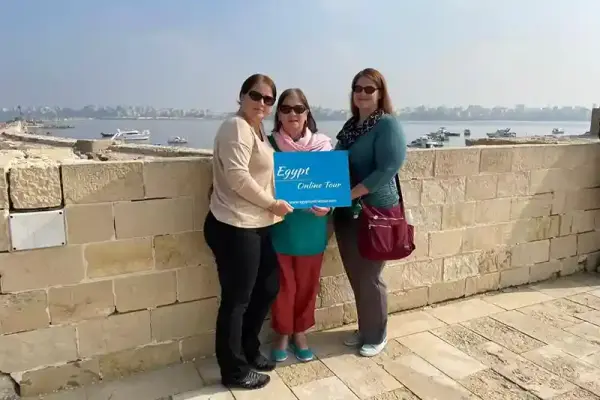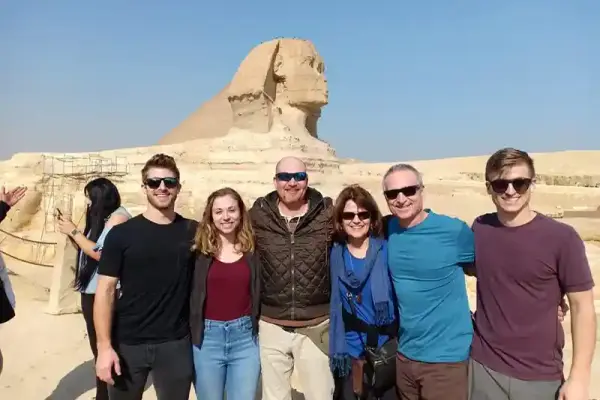Achievements of King Tut | How the Boy King Shaped Egypt
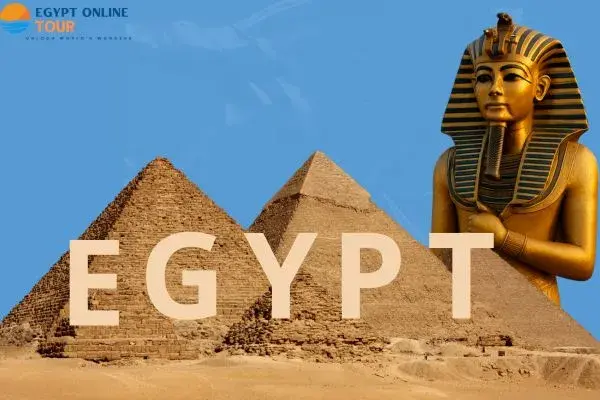
- Apr 29, 2025
- Ancient Egyptian Civilization
- 2,921
Tutankhamun, most well-known as the boy king, governed Egypt from 1332 to 1323 BC during the 18th Dynasty. Despite his short reign, the achievements of King Tut were crucial to restoring order to Egypt following Akhenaten's unstable reign. He was born into a complex web of political and theological unrest, and his achievements, no matter how little, continue to enthrall historians and tourists. We will discover King Tut's history before going deeper into his reign, achievements, and tomb discovery.
Table of contents [Show]
- When Tutankhamun was born
-
What are 5 interesting facts about King Tut?
- 1. Hundreds of pairs of shoes were among the 5,000 magnificent items that were interred with Tutankhamun!
- 2. Three coffins were used to bury Tutankhamun.
- 3. When Tutankhamun passed away, he was just 19 years old.
- 4. Some believe that the tomb of Tutankhamun is cursed.
- 5. There were two robberies at Tutankhamun's tomb!
- The Reign of Tutankhamun
- The Reputation and Succession of Tutankhamun
- King Tut's Accomplishments
- What were King Tut’s Achievements?
- How exactly did Tutankhamun die?
- Discovery of Tutankhamun's tomb
- Is the tomb of Tutankhamun worth visiting?
- Summary
When Tutankhamun was born
We may assume that Tutankhamun was born around 1342 BCE because it is commonly believed that he gained the throne at the age of nine, approximately 1333 BCE.
- His parents
According to archeological discoveries, he was the son of Pharaoh Akhenaten , also called Amenhotep IV. Archaeologists like to call Tutankhamun's mother the Younger Lady, but little is known about her. Archaeologists are still unaware of her name today. His father and mother, however, are thought to have been siblings. In those days, it was not unusual for the pharaoh to wed his mother or sister (i.e., as queen consort). In short, intra-sibling or intra-family marriages were common in ancient Egypt.
- Place of birth
According to Egyptologists, Tutankhamun was born and reared at Amarna, the capital of Egypt's government and religion. Tutankhamun's father, Pharaoh Akhenaten, built Amarna specifically for the worship of the sun deity Aten. Akhenaten's father was Pharaoh Amenhotep III.
What does his name mean?
Tutankhamun's father's extreme reformation must have led to his upbringing as a monotheist. The most well-known aspect of Pharaoh Akhenaten's reign, according to archaeologists, is that it was the only period in which the Egyptians primarily worshipped the sun deity, Aten.
The aforementioned clarifies why he was given the name Tutankhaten at birth. "The living image of Aten" is how this name is translated.
What are 5 interesting facts about King Tut?
Here are five unexpected facts about King Tutankhamun and his treasure trove, including his expensive casket and symbolic shoes.
1. Hundreds of pairs of shoes were among the 5,000 magnificent items that were interred with Tutankhamun!
The golden coffin of Tutankhamun was interred in a tomb in the Valley of the Kings, encircled by five thousand priceless items. From his brilliant shoes, some of which had drawings of his opponents on the soles, to the canopic jars that held his organs, the king trampled all over his enemies wherever he went!
2. Three coffins were used to bury Tutankhamun.
King Tut's coffin, which weighed about 240 pounds (that's as heavy as a giant panda!), was a complex three-piece sarcophagus, with the innermost section made of solid gold and the outermost piece made of red quartzite.
In today's money, it would be worth well over a million pounds.
3. When Tutankhamun passed away, he was just 19 years old.
Even though Tutankhamun was interred in such a lavish sarcophagus, his tomb was rather tiny for a pharaoh. It was constructed for an Egyptian aristocrat, according to archaeologists, but Tutankhamun utilized it after his untimely death in 1324 B.C. at the age of 19. Tutankhamun became the youngest pharaoh to govern the ancient Egyptian empire when he took the throne at the age of nine.
4. Some believe that the tomb of Tutankhamun is cursed.
Enter at your own risk! Since Howard Carter uncovered Tutankhamun's tomb in 1922, many have believed that those who stepped inside would fall victim to the legendary "Curse of the Pharaohs."
5. There were two robberies at Tutankhamun's tomb!
Howard Carter and his team spent ten years classifying and emptying Tutankhamun's tomb when it was found in 1922. But Carter was not the first to see all of King Tut's amazing riches—the tomb had already been looted twice during the previous period!
Thieves entered the tomb twice at the time of the pharaohs: the first time, the thieves heard the crawling feet of the cowardly soldiers, so they escaped. The second time, the cemetery guards locked and sealed the tomb.
Then a flood in the valley locked the tomb. Some time later, they built the tomb of Ramesses VI. The stones fell into the ground, and the tomb was closed and left with no way out at all; therefore, this protected it from theft.
Maybe like to read: Facts About King Tut
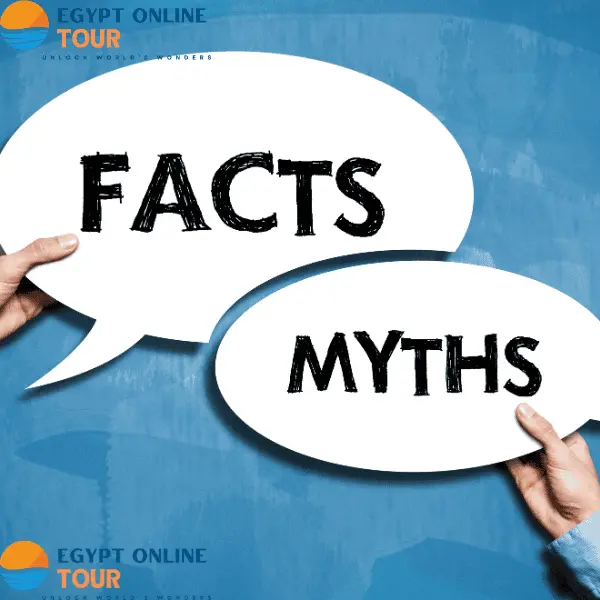
The Reign of Tutankhamun
S menkhkare was a regent in Egypt during the last years of Akhenaten's rule. Shortly after Akhenaten's death, Smenkhkare was the regent.
- His age when he became the pharaoh of Egypt
Tutankhamun was 9 years old when he became the pharaoh of Egypt after Smenkhkare's death.
- His wife
Tutankhamun acquired a wife for himself as required by custom. He wed Ankhesenamen (Ankhesenamun), one of Akhenaten's daughters.
Given his youth and relative inexperience, Tutankhamun probably left the real running of Egypt to more seasoned and knowledgeable advisors.
- His advisors
Ay and General Horemheb were the most famous of these advisors.
Ay was the grand vizier of Tutankhamun. He oversaw the king's court's internal affairs and held considerable authority throughout Egypt. In terms of the military, Tutankhamun assigned Horemheb the duty of supervising Egypt's triumphs abroad.
- Unprecedented heights for Egypt
Together, Ay and Horemheb guided Egypt's affairs to previously unheard-of heights.
Tutankhamun quickly turned away from his father's methods while Egypt was still in shock over Akhenaten's monotheistic religious establishments. The y oung pharaoh reinstituted Egypt's polytheistic religious beliefs in his third year of rule, working with his loyal advisors.
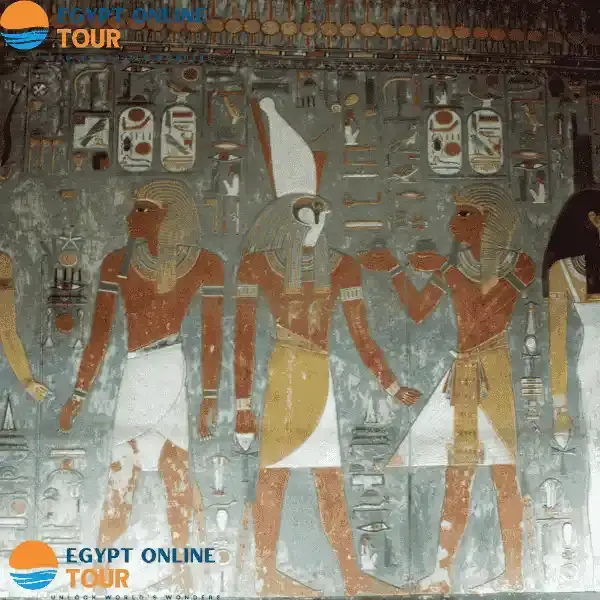
The Reputation and Succession of Tutankhamun
After his untimely death, Tutankhamun left his kingdom without a natural heir because he had no children. After his death, the throne passed to his grand vizier, the noble Ay. Horemheb, a famous general under King Tut, also ascended to the throne shortly after Ay's reign.
Why were there so many valuables in his little grave?
- According to archaeologists, Tutankhamun's death was so sudden that the new pharaoh had no option but to bury him quickly. This would likely explain why there were so many valuables in such a small grave.
- According to a different opinion, Tutankhamun's reputation might have been damaged after his death because of his early affiliation with his father's heretical views (the Amarna period). The ancient Egyptians' top priority was to swiftly remove all monuments and recollections that in any way brought back memories of those heretical rulers and times.
Unfortunately, Tutankhamun's reputation and legacy were so harmed that his name was taken off many historic monuments and antiquities.
King Tut's Accomplishments
Tutankhamun’s reign didn’t exceed 10 years (1336-1327 BC), although he undertook several political and religious reforms:
- Re-worship of Amun:
After a period of religious chaos caused by the policies of Akhenaten, Tutankhamun ordered the return of the temples of the God Amon and the lifting of the ban on his worship, restoring stability to Egyptian society.
- Reform of external relations:
He sought to restore diplomatic relations with neighboring countries that were damaged during his father's rule, thereby contributing to Egypt's political status.
- Urbanization:
He contributed to temple construction projects and re-worked in many major religious installations, especially in Karnak and Luxor.
Let our local travel experts help you design the perfect itinerary. Whether you're seeking adventure, culture, or relaxation, we've got you covered!
What were King Tut’s Achievements?
While King Tutankhamun's reign was brief, his contributions were essential in bringing stability to Egypt during a time of great change. Let’s take a closer look at the key achievements of King Tut that make him such a fascinating pharaoh in Egyptian history!
Moved the Capital Back to Thebes
King Tutankhamun’s very first action as ruler was moving the capital of Egypt from Akhetaten (modern-day Amarna) back to Thebes. This move was significant as it showed his desire to restore both religious and political order. Thebes was closely associated with the worship of Amun, making it the heart of ancient Egyptian culture.
Building Projects
Although King Tut isn’t known for grand monuments like some other pharaohs, he did focus on important restoration projects. After Akhenaten’s reign left many temples neglected, King Tut worked hard to repair and reopen them, especially those dedicated to Amun. His dedication to these temples highlighted his commitment to traditional values.
Military Campaigns
Although King Tut’s reign saw few major military triumphs, his rule likely involved smaller campaigns aimed at restoring Egypt’s influence over nearby regions. These efforts aimed to reclaim lost territories in places like Nubia and Syria.
Cultural Contributions
The revival of Egypt's polytheistic religion is among King Tut's most significant contributions. By moving away from his father’s monotheistic worship of Aten and embracing the traditional Egyptian pantheon again, he had a lasting impact on art, culture, and religious practices that still resonate today.
Economic Achievements
Following the difficulties of Akhenaten's government, there was a slight economic recovery during King Tut's reign. Trade routes were reopened, and commerce with neighboring countries resumed, which helped Egypt regain access to essential resources.
Diplomatic and Political Achievements
King Tut made a concerted effort to improve relations with Egypt's friends. His marriage to Ankhesenamun was a strategic move to bolster his legitimacy, and his diplomatic efforts helped form alliances that secured Egypt’s borders and promoted peaceful relationships with other nations.
Educational Initiatives
While we don’t have much direct evidence of educational policies during King Tut’s reign, his religious reforms likely influenced what was taught in priestly schools and other learning institutions. This means that the traditional knowledge and beliefs were passed down through generations, helping to instill wisdom in the youth of Egypt.
Contributions to Egyptian Art and Architecture
Art flourished during King Tut's reign as it reverted to the classical styles of previous dynasties. This shift meant moving away from the exaggerated forms introduced in Akhenaten’s era. Under King Tut, art celebrated traditional representations of gods, royalty, and daily life, as evidenced by the beautiful artwork found in his tomb.
Technological Progress
While King Tut’s reign didn’t produce any groundbreaking technological advancements, the discoveries from his tomb showed the incredible craftsmanship of the time. For example, his stunning gold death mask featured intricate metalworking, and the chariots highlighted Egypt’s expertise in transportation technology.
Though King Tutankhamun’s reign was brief, his legacy continues to leave a lasting mark on Egypt’s rich history.
Read about: Did Thoth Build the Pyramids
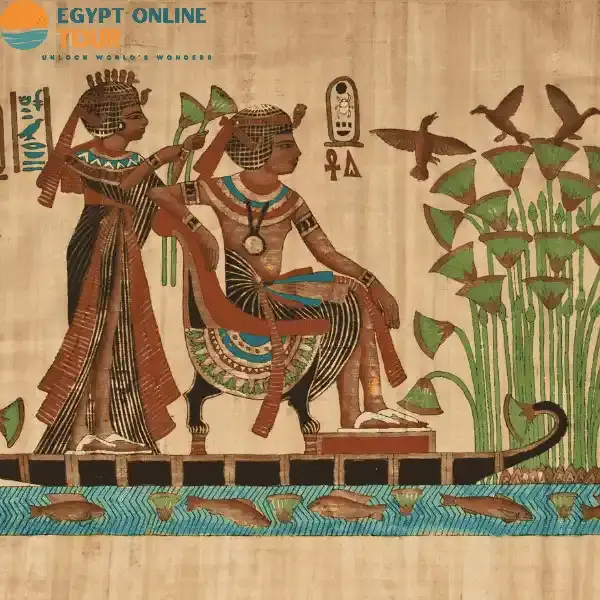
How exactly did Tutankhamun die?
King Tutankhamun ruled for around ten years until passing away at the age of nineteen in 1323 BCE. In the latter years of his rule, the pharaoh suffered from several ailments. He most likely passed away due to an infection, possibly gangrene from a shattered leg.
What was the expected cause of his death?
There are numerous ideas on the cause of Tutankhamun's death, even though it remains a mystery to this day:
- According to a 2010 archaeological investigation, Tutankhamun may have died of malaria. According to the report's analysis of King Tut's remains, malaria was most likely the cause of his death.
- After scanning it with cutting-edge scanning equipment, archaeologists found a deep hole behind King Tut's skull. They speculate that one of Tutankhamun's courtiers may have killed him. Alternatively, he might have just dropped from his chariot and hit his skull on something sharp. The experts say the former seems more likely than the latter.
- The hole in Tut's skull is attributed by some scientists to a common instance of mummification gone wrong. Since the ancient Egyptians were not the best human anatomists, it is likely that an embalmer accidentally punctured the skull in their hurry to bury the king's remains.
Reveal How to Enjoy A Luxury Vacation in Egypt for an unforgettable experience.
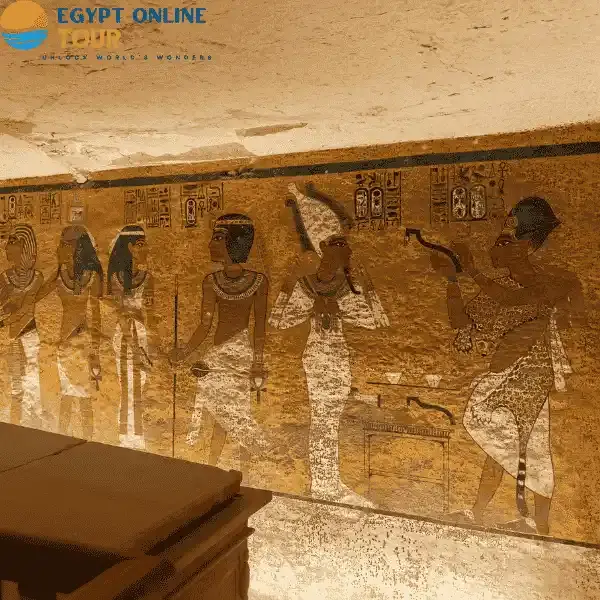
Discovery of Tutankhamun's tomb
The archaeological biography of Howard Carter is impressive. He traveled to Egypt in 1891 as a 17-year-old archaeological draftsman with no formal training, where he developed a remarkable career as an excavator. Carter was widely commended for his accomplishments as the chief inspector of antiquities for Upper Egypt, but his career ended abruptly when he defended Egyptian site guards against French tourists. The years that followed were incredibly difficult, but everything changed after a fateful meeting with Lord Carnarvon, a wealthy aristocrat.

The Thrill of Discovery
Carter persuaded Carnarvon that the tomb of Pharaoh Tutankhamun must remain in the Valley of the Kings, and he did so with much passion. Carter's hunt for the hidden tomb was funded by Lord Carnarvon for five hard years, but it seemed to be in vain. When Carnarvon finally refused to continue supporting the project, Carter persuaded him to let one more season of excavation. It worked. In November 1922, Carter made the most astounding discovery in history: the last resting place of King Tutankhamun!
Related article: How Many Tombs in the Valley of the Kings?
Opening the tomb
On November 26, 1922, Carter first visited the burial chamber of the pharaoh Tutankhamun and was amazed by the wealth he observed. In front of him were four chambers, some of which were crammed with priceless burial relics. The deceased pharaoh was expected to accompany them into the afterlife. Weapons, musical instruments, amulets, chairs, chests, jewelry, cult items, royal insignias, and musical instruments created by skilled artisans using the most valuable materials, including ebony, alabaster, and precious stones, including gold and more gold. Daggers, necklaces, bracelets, and shrines made of gold. Amid all of this unending splendor, the final result was a burial chamber covered in wall murals that featured the pharaoh's tomb and the mummy's face shrouded in a death mask. These depictions were more beautiful and dignified than anything that had ever been seen.
The most intact royal Egyptian tomb
King Tut's tomb is still the best-preserved royal Egyptian tomb ever discovered, which provides historians with crucial knowledge about this ancient society. Tut is currently considered one of history's most famous ancient leaders, even if the subsequent pharaohs wanted to forget him. You will discover more through any of Egypt Classic Tours .
Is the tomb of Tutankhamun worth visiting?
The tomb of the young Pharaoh Tutankhamun, discovered in 1922 in the Valley of the Kings in Egypt, still reveals its secrets despite the passage of more than a century since its discovery, and its golden treasures amazed the world.
The secret of the global obsession with Tutankhamun lies in the tomb’s preservation of all its unique treasures, unlike other tombs that were plundered, and in the mystery surrounding the fate of this young pharaoh.
Why make your reservation with Egypt Tour Online?
You may rely on experts like Egypt Tour Online:
- To make careful arrangements so you can enjoy Egypt tour packages in luxury, style, and exclusivity.
- Because when it comes to luxury travel, the small things definitely matter!
- Egypt Tour Online maintains the greatest standards of customer service while providing a degree of authenticity that we alone can provide.
- Whatever tour you want, we can tailor every detail to your preferences and interests.
- We handle everything so you can focus on enjoying your vacation.
- With our partnerships with top hotels, cruise lines, and private transportation providers, we ensure that you will see Egypt in unmatched comfort and style.
Our tours that include visiting the Valley of the Kings
Whatever tour you want, we can tailor every detail to your preferences and interests. Most of our Egypt Classic Tours include visiting the Valley of the Kings, ensuring you learn about the achievements of King Tut and see his tomb.
- 10 Days Cairo, Aswan, Luxor & Hurghada Overland Tour
- 8 Days Pyramids & The Nile by Air
- 8 Days Cairo, Luxor, Aswan Classic Tours
- 8 Days Cairo to Abu Simbel and Back Overland
- 5 Days Cairo to Luxor Tour Packages
- 12 Days Pyramids, Nile & Sinai Tour
- 10 Days Round Trip Nile Cruise and Pyramids
- 11 Days of Classic Egypt, Cairo, Nile Cruise & Red Sea
- 15 Days Marvelous Tour Package in Egypt
- 7 Day Egypt Tour Cairo Nile Cruise and Luxor Temples
Summary
Although the achievements of King Tut were not the greatest military or political achievements, the discovery of his tomb made him a timeless icon in ancient Egyptian history. Among his unique treasures, the Golden Throne remains a witness to the upliftment of ancient Egyptian art and the life of royal palaces. This discovery continues to intrigue researchers and archaeologists.
Contact us now to arrange your trip and discover a rare window overlooking the secrets of ancient Egyptian civilization.
Let our local travel experts help you design the perfect itinerary. Whether you're seeking adventure, culture, or relaxation, we've got you covered!
Popular Categories
Popular Posts

Top Alexandria Beaches You Must Visit 2026
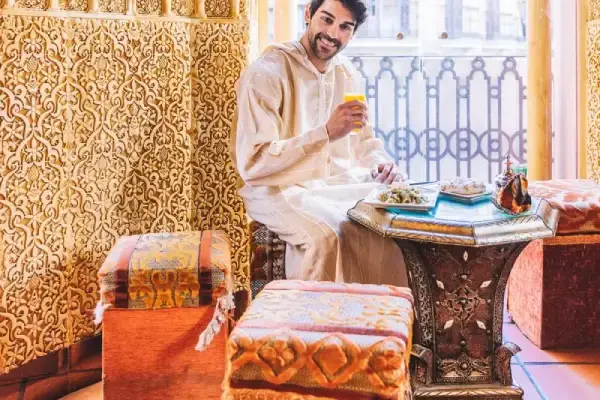
What are the important holidays in Egypt?
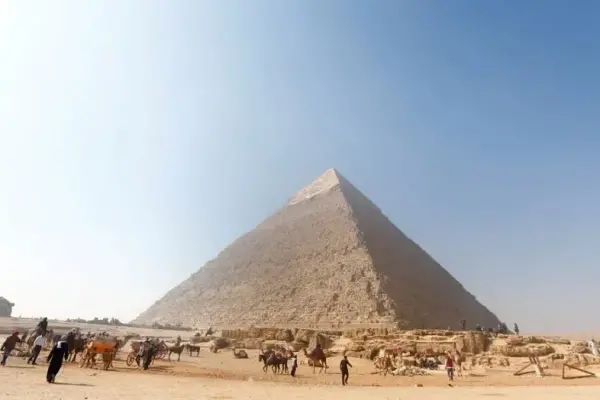
What countries have pyramids- Know the full details
Related tours
Cairo, Aswan, and Luxor
-
Price
$ 5,900
-
Type
Package
Cairo, Aswan, and Luxor
-
Price
$ 1,850
-
Type
Package
